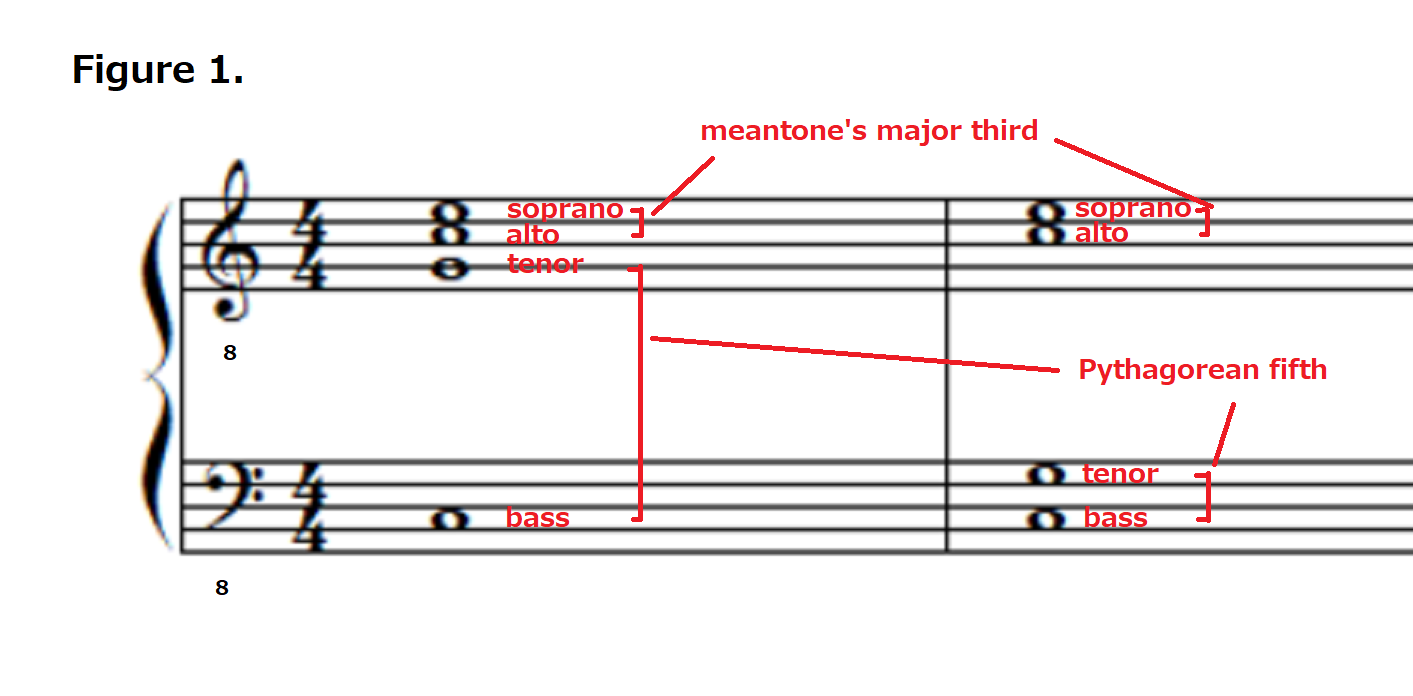How to make the genuine three chords
I have already mentioned that it is possible to create genuine triads by using “Tartini tones”. I will omit the explanation of the “Tartini tones” themselves this time, so please refer to this page.
Also, a discussion of tuning of the instruments can read here for your reference.
Now, let’s review what a genuine triad is. A genuine triad is a triad consisting of the Pythagorean fifth degree and the meantone’s major third degree, a triad that has no beat in both of fifth and major third to the root note.
To experience this, first try making C major triads with the soprano recorder, alto recorder, tenor recorder, and bass recorder in a good sounding hall. Of course, you can use other instruments as well. The recorder is a good instrument for this experiment because it has few higher harmonics, so Tartini tones (difference tones) can be heard well, and its pitch can be easily adjusted.(* Figure 1)
The alto recorder plays a long tone of C, and the soprano recorder plays a long tone of E. At this point you should hear the third low note is played in the ear. The pitch should be around C, two octaves below the C of the alto recorder. This is the “difference tone” (Tartini tone). If you blow at a very normal pressure, this C should sound a little bit higher. In order to lower the “difference tone” C to exactly match the C played by the alto, the soprano recorder player may need to play the E note weaker or lower the pitch by holding his finger over the finger hole. The resulting major third degree is the genuine major third (meantone’s major third degree without a beat). The bass recorder blows a C two octaves below the alto.
The tenor recorder plays G. This G is a Pythagorean fifth degree, which is 2 cents higher than the equal temperament’s fifth, so if the instrument were tuned in equal temoerament (which is actually rare case), it may have to play it a little harder or use a alternate fingering. The resulting the triads would be in pure harmony, with all the “difference tone” notes between all of the other voices coinciding with the C of the bass recorder.
The important thing to remember from the above is that a genuine major third degree is “quite narrow”. In other words, if the harmony is “dirty”, the cause is almost always the major third degree. In fact, the genuine major third is 13.5 cents lower than the equal temperament’s major third. This means that it is necessary to be conscious of lowering it. The Pythagorean fifth degree is 2 cents higher than the average fifth degree, but this is within the “margin of error” even if you are not conscious of it, I think. #baroque #tartini #片山俊幸


